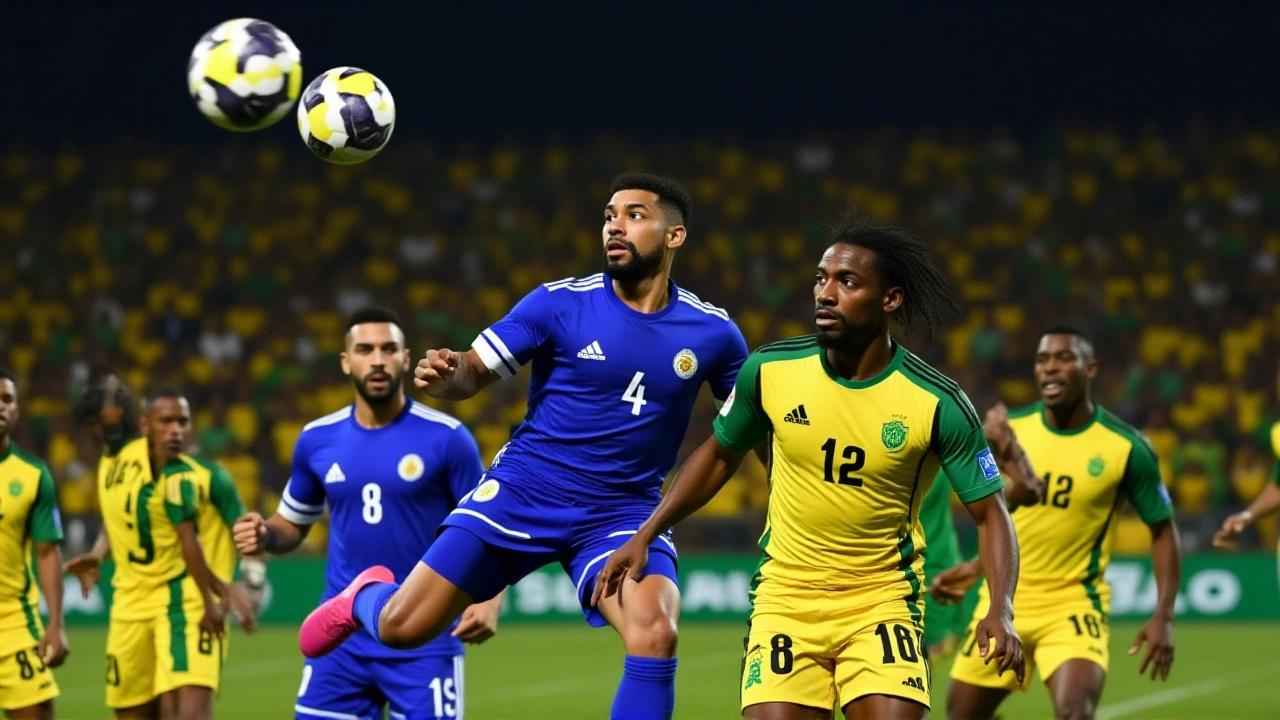On Tuesday, November 18, 2025, under the floodlights of Kingston’s National Stadium, a tiny island nation with fewer people than many U.S. high schools did the impossible: Curaçao booked its first-ever ticket to the 2026 FIFA World CupUnited States, Canada, and Mexico. The 0-0 draw against Jamaica wasn’t pretty — no goals, few clear chances — but it was perfect. For a country of just 165,000 souls, this wasn’t just a result. It was a revolution.
A Blue Wave That Defied the Odds
Curaçao didn’t win the match. They didn’t need to. Finishing top of Concacaf’s Group B with 13 points, they leapfrogged Jamaica, who now heads to the intercontinental playoff. The game was tense, physical, and full of near-misses. In the 54th minute, Jamaica’s Greg Leigh powered a header off the right post. Two minutes later, Curaçao’s Jürgen Locadia broke free inside the box — only for Andre Blake, Jamaica’s veteran goalkeeper, to dive low and smother the shot. Then came the heart-stopping moments: Shamar Nicholson’s header rattled the crossbar in the 70th, and Bailey Cadamarteri’s 87th-minute strike clanged off the upright. The crowd in Kingston held its breath. The blue-clad fans in the stands? They knew. This was their moment.YouTube highlights released at 0:01:31 UTC on November 19 captured the exact second the truth sank in: "Curaçao have done it. A blue wave is heading to the World Cup for the first time in their history." It wasn’t just commentary. It was prophecy fulfilled.
The Smallest Nation on the Biggest Stage
Curaçao’s population is smaller than the student body of the University of Florida. Its landmass — 444 square kilometers — is less than half the size of New York City. And yet, they’ve done what Iceland couldn’t. When Iceland qualified for the 2018 World Cup, they had 370,000 people. Curaçao has less than half that. This isn’t just a record. It’s a paradigm shift.Before 2026, no nation with fewer than 300,000 people had ever played in a World Cup finals. Now, a Caribbean island that was once part of the Netherlands Antilles — dissolved in 2010 — stands alone as the smallest sovereign FIFA member to reach the tournament. Their journey began in 1958, when they competed as part of the Netherlands Antilles. Since becoming an independent FIFA member in 2011, they’ve been the underdogs: no professional league, minimal funding, players scattered across Europe’s lower divisions. Yet here they are.
How They Did It
Curaçao didn’t win with star power. They won with grit. Their squad features a mix of Dutch-trained players, local talent from Willemstad’s youth academies, and a few veterans who’ve played in Belgium and the Netherlands. Coach Erwin Sánchez, a former Bolivia international, built a team built on discipline and counter-attacking precision. Their defense conceded just three goals in six group matches. Their midfield, anchored by Chiqui Conde and Jin Bakuna, controlled tempo even when outmatched.Financially, they operate on a shoestring. While the U.S. and Mexico spent millions on national team camps and analytics, Curaçao’s federation relied on private donations and crowdfunding. Players often paid their own travel expenses. Their training ground in Willemstad? A dusty pitch with one working floodlight. Yet their belief was unshakable.

What This Means for the Caribbean
This isn’t just a win for Curaçao. It’s a spark for the entire region. Trinidad and Tobago, Haiti, Suriname, and even smaller islands like Sint Maarten and Aruba watched with awe. For decades, the Caribbean has been seen as a talent pipeline — players who leave to play in Europe, never returning. But Curaçao proved you don’t need a big budget to build a big dream.Concacaf’s expansion to 48 teams — and the addition of three direct slots for the region — created the opportunity. But Curaçao seized it. They didn’t just qualify. They outlasted teams with ten times their resources. And they did it without a single home match in the final round — playing all six games away.
What’s Next?
Now, the real challenge begins. The 2026 World Cup kicks off June 11, 2026, across 16 venues from Vancouver to Mexico City. Curaçao will be drawn into a group with heavyweights — likely the U.S., Canada, or a South American team. They won’t be expected to advance. But that’s fine. They’ve already rewritten history.Expect a wave of support from the Dutch diaspora, a surge in youth football programs across the ABC islands, and maybe even a government-funded stadium upgrade in Willemstad. The players? They’ll get bonuses, sure. But more importantly, they’ll get legacy.

Behind the Scenes: The Real Story
The day after the match, a video surfaced online. It showed Curaçao’s captain, Chiqui Conde, kneeling alone on the pitch in Kingston, kissing the turf. "This isn’t just for us," he told reporters later. "It’s for every kid in Kralendijk who thinks they’re too small to dream big. We proved you don’t need size. You just need heart."And that’s why this matters. Not because of the stats, or the population numbers. But because sometimes, football isn’t about money. It’s about belief.
Frequently Asked Questions
How did Curaçao qualify for the 2026 World Cup despite having such a small population?
Curaçao finished first in Concacaf’s Final Round Group B with 13 points from six matches, edging out Jamaica on goal difference. Their defense was the tightest in the group, conceding only three goals. Though they lacked resources, their disciplined structure, experienced coaching under Erwin Sánchez, and cohesive team chemistry allowed them to outperform larger nations with far greater budgets.
Who are the key players behind Curaçao’s historic run?
Midfielder Jin Bakuna controlled the tempo, while captain Chiqui Conde anchored the defense. Jürgen Locadia, playing in Belgium’s second division, provided the attacking threat, and goalkeeper Sven van Beek made crucial saves throughout the qualifiers. Though none are global stars, their collective discipline and tactical awareness turned them into a unit far greater than the sum of its parts.
Why is this qualification considered more significant than Iceland’s 2018 appearance?
Iceland had a population of 370,000 when they qualified — more than double Curaçao’s 165,000. Curaçao also lacks Iceland’s state-funded sports infrastructure and professional domestic league. Their achievement is more remarkable because they did it with minimal institutional support, relying on community-driven football culture and diaspora investment.
What impact will this have on youth football in the Caribbean?
Curaçao’s success has already inspired new grassroots programs in neighboring islands like Aruba and Bonaire. The Curaçao Football Federation reported a 40% surge in youth registrations within 72 hours of qualification. Local schools are now integrating World Cup-themed curricula, and the government is considering funding a national academy — a first for the island.
Will Curaçao host any World Cup matches in 2026?
No. The 2026 World Cup will be held exclusively in the United States, Canada, and Mexico. Curaçao will not host any matches, but they will travel as one of the 48 participating teams. Their group stage opponents will be determined in December 2025 during the official draw in Los Angeles.
How did Concacaf’s expansion to 48 teams help Curaçao qualify?
Before 2026, Concacaf had only two direct World Cup slots. The expansion to three direct spots — plus one playoff berth — opened the door for smaller nations. Curaçao finished just ahead of Jamaica in Group B, and that extra slot meant they didn’t need to win their final match. A draw was enough. Without the expanded format, they would’ve been eliminated.





